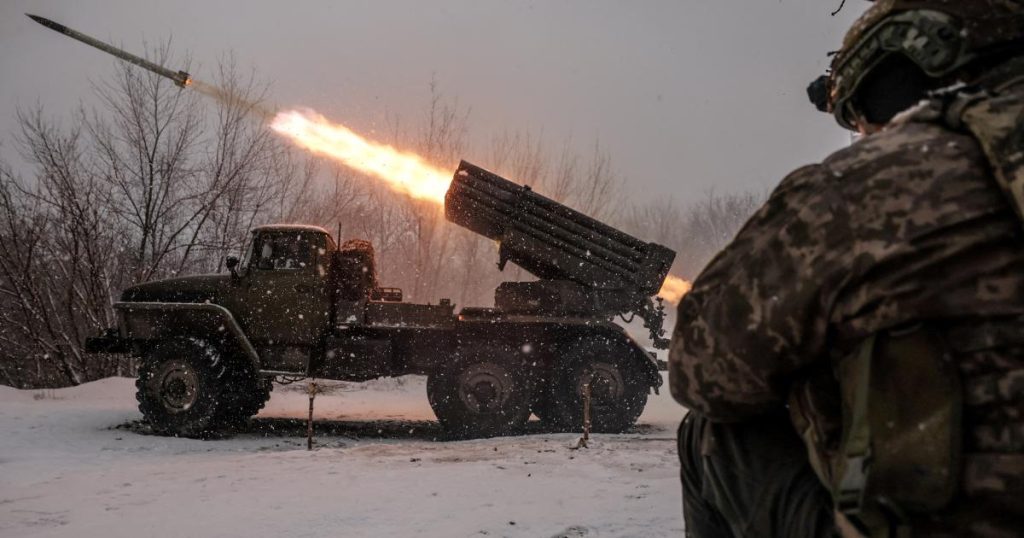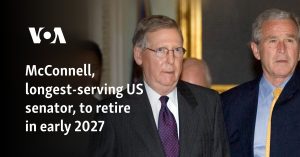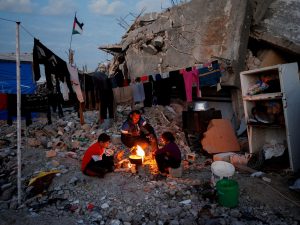At last week’s Ukraine Defense Contact Group meeting in Brussels, newly minted U.S. Defense Secretary Pete Hegseth declared that the position of the U.S. government was that Ukraine will not join NATO. Although greeted with horror by some in Washington and in European capitals, Hegseth’s remarks were in fact more a public statement of reality than a genuine change in policy. This position had been telegraphed throughout the Trump campaign and transition, and even the Biden administration had been skeptical of Ukrainian membership any time soon. The risks of admitting Ukraine to the alliance—reflected in widespread opposition to it in the United States, Germany, and elsewhere—have long made this reality perfectly clear to all.
Even Ukrainian President Volodymyr Zelensky has recently acknowledged that NATO membership is probably not on the table. He has focused instead on making a different case to Ukraine’s Western backers: if NATO membership is not available, then his country needs equivalent security guarantees from Europe or the United States to prevent Russia from starting a new war in coming years. With the Trump administration insisting that no U.S. troops be sent to Ukraine, the conversation in European capitals is increasingly focused on whether and how European states can provide “security guarantees” through their own deployments.
Yet there are reasons to doubt whether a European guarantee to provide troops is feasible, especially without substantial U.S. involvement. As the negotiation phase of the Ukraine war begins in the coming days, it is important to understand that security guarantees are not the only way to prevent Russian recidivism. Instead, policymakers should consider alternatives to direct security guarantees: how to boost Ukraine’s own deterrent capabilities while addressing the conflict’s underlying causes. Ultimately, such steps are likely to be more credible and more effective than a half-baked European peacekeeping force overly reliant on the United States for crucial support in areas such as surveillance and military logistics.
BOOTS ON THE GROUND
The reason for European policymakers’ recent focus on security guarantees that involve troop deployments is simple: one of the most challenging questions in any peace negotiation is how to prevent a recurrence of war after a short hiatus. Although there could be benefits to even a temporary cease-fire in Ukraine, it will take a longer and more durable peace to enable Ukraine’s economic reconstruction and future prosperity. If a return to war remains likely, even governments will be hesitant to commit much support to rebuilding Ukraine’s infrastructure and economy; the private sector will be even less likely to invest.
Kyiv itself has long been insistent that the only way to resolve this concern is to provide Ukraine with NATO membership as part of an eventual peace deal. This is ideal from Kyiv’s point of view because it offloads the problem of preventing a future war to the United States. It would also be beneficial for European states—“cost effective,” as one EU leader recently put it—as it would rely less on spending, arms, or military deployments and more on the paper guarantee provided by NATO’s Article 5.
But NATO membership for Ukraine remains unlikely in the long term and implausible in the short term. Skepticism among some European policymakers, most notably in Germany, goes back at least as far as the Bucharest summit in 2008 (when the George W. Bush administration sought to offer Ukraine and Georgia a path to membership and European governments resisted), and the war itself has added further obstacles to Ukrainian membership. NATO membership for Ukraine would commit the United States and European states to do the very thing they’ve resisted for four years: face off directly with Russia on Ukraine’s behalf.
With NATO off the table, and the United States refusing to send troops, discussion in European policy circles has focused on ways to provide a security guarantee for Ukraine that replicates but does not require NATO membership. Some agreements are already in place: states including France, Poland, and the United Kingdom have signed bilateral security cooperation agreements with Ukraine, mostly related to weapons or training. Commitments to provide troops, however, have been less forthcoming. Private discussions on troop deployments to enforce a line of demarcation are ongoing. British Prime Minister Keir Starmer has said that his country could send troops, but French President Emmanuel Macron—the only European leader to previously pledge such deployments—has become equivocal on this question, backing off his original commitment. Poland, perhaps the most vocal supporter of Ukraine, has flatly denied plans to send troops to Ukraine.
Conventional arms control could lower the likelihood of future conflict.
The focus on troops reflects a widespread concern in European policy circles that a mere paper guarantee—a commitment to send troops in case of future attacks—would not be credible on its own. This view is almost certainly correct. Neither European states nor the United States have been willing to send troops to die in Ukraine during the current war. Without some kind of on-the-ground tripwire presence to force their hand in the event of conflict, a simple guarantee would likely be viewed as an empty promise in Moscow, akin to the 1994 Budapest memorandum, which offered Ukraine assurances about its security as it relinquished any claim to retaining Soviet-era nuclear weapons but offered no concrete assistance.
Even if European states could somehow scrape together the political will to provide such a force, other significant problems would arise. The current frontline in Ukraine is over 500 miles long; Ukraine’s borders with Russia and Belarus are over 2,000 miles long. Various military assessments suggest that between 40,000 and 200,000 troops would be necessary to enforce peace and to deter Russia from future attack. The upper end of that scale is simply not feasible given existing forces and readiness; current talks are instead focused near the low end, a proposed deployment of around 50,000 European troops.
Even 50,000 troops would be a significant lift for European states, requiring them to pull peacekeepers from other conflicts and to ignore NATO’s own defense-planning requirements. It would add a significant new mission for European forces at the same time they are being asked to take over defense burdens from the United States. And perhaps most problematic is that such a force would likely be insufficient to deter Russia, acting instead as a tripwire force that could pull Europe into any new war. One recent report from the German think tank SWP described this as a “bluff and pray” approach, in which European states make commitments that match their current capabilities, even if these are manifestly inadequate.
FOREIGN ENTANGLEMENTS
Another problem for Washington is that these European efforts do not necessarily keep the United States out of future conflict. For one thing, most experts writing about the potential deployment of European troops in Ukraine usually include a caveat: the backing of U.S. enablers (in the form of assistance on command and control, aerial refueling, and intelligence, surveillance, and reconnaissance) would be necessary to make the deployment possible. This need reflects the reality that European states are not fully capable of mounting an operation of this size without U.S. support, meaning that U.S. troops would have to be present, at least in small numbers, to support European deployments.
What’s more, an all-European mission in Ukraine would still raise the risk that the United States would be pulled into a future war in Ukraine. This is particularly true in the case of a small European deterrent force that doesn’t have sufficient reserves to call on in a crisis. Even if U.S. policymakers were clear up front that NATO’s Article 5 would not apply to the deployed European troops, the pressure to respond in the event of a Russian attack would be overwhelming, potentially pulling the United States into war.
A final problem is a significant European force in Ukraine would seem to contradict one of Russia’s basic demands throughout the conflict—that Ukraine not play host to NATO forces or bases. It could easily become a stumbling block to peace negotiations themselves. Indeed, although there seems to be a widespread assumption in many Western discussions that European states could act in a peacekeeping capacity in Ukraine, these conversations often conflate peacekeeping roles for European troops (such as cease-fire enforcement) with broader post-conflict deterrence.
DETERRENCE BEGINS AT HOME
The bottom line is that directly guaranteeing Ukraine’s security through either troop deployments or alliance commitments is overly risky for both Europe and the United States. Yet the fundamental problem for negotiators remains: how can a peace deal be structured in such a way that it does not simply provide Russia an incentive to rearm and attempt to seize more of Ukraine in coming years?
Key to doing so is bolstering homegrown Ukrainian deterrence. Ukraine, after all, has fought the current war alone, albeit with the aid of Western weapons and funding. Ukraine’s military continues to have issues with corruption and manpower but nonetheless performed relatively well in the early stages of the conflict. It has demonstrated significant adaptation and innovation when it comes to areas like drone warfare or sea denial operations. And even today, under severe strain, the Ukrainian military continues to resist the substantially larger Russian military machine.
A rebuilt and adequately supplied Ukrainian military would be a formidable deterrent to Moscow, and Western support will be critical to this military rebuilding. Rather than paper promises of NATO membership—or insufficient European troop deployments—what Ukraine needs is Western partners to provide arms and funding in the case of a future war, much as these states have done for the last three years. This could even be framed as a kind of security guarantee, in that it provides training and arms to Ukraine in peacetime and aid in a future war. But unlike troop deployments or paper guarantees of future intervention, guaranteeing arms to Ukraine is focused not on help from elsewhere but on self-help, enabling it to build a robust homegrown defensive capability.
Experiences during the current war highlight the need to prioritize the areas that Ukraine actually needs in order to defend itself against Russian aggression. The United States has too often attempted to build partner militaries in the image of its own forces, prioritizing high-tech, expensive, complex systems over simpler or cheaper forms of defense. The contrast has been clear over the last three years between extremely high-cost systems such as High Mobility Artillery Rocket Systems (HIMARS) and low-cost, improvised systems (such as first-person-view, or FPV, drones), which have often been used for similar purposes. Indeed, there are a variety of low-cost measures such as mines and fortifications that would help to make the conquest of Ukraine more difficult, and Ukraine’s own defense industrial base is well positioned to produce many of these domestically with Western support. Other areas should be deprioritized to conserve scarce resources; Ukraine, for example, does not need high-end fighter jets.
Despite the lack of Western troops, homegrown Ukrainian deterrence may still pose problems in negotiations. Prior negotiations in Istanbul in spring 2022, for example, tied Russia’s demand that Ukraine be a “neutral” state directly to limitations on various kinds of weapons; it is likely that some limitations on arms would have to be negotiated as part of any peace settlement. But there is no reason why this should be incompatible with a robust Ukrainian deterrence as long as Western aid focuses on systems that are effective for denial and defense (for example, missile defense and static defenses over deep-strike capabilities). Yet negotiators should not accept significant limitations on the size of Ukraine’s military, which must remain large enough to deter Russia and defend the country.
A NEW SECURITY ARCHITECTURE
As they work to bolster Ukrainian deterrence, policymakers should not shy away from the even more ambitious task of trying to resolve some of the underlying causes of the conflict. This war has existed in various forms since 2014, and both cease-fires and negotiations have failed. Over ten years, the scope of the conflict has grown, and the underlying issues have metastasized. Many of the mechanisms that had previously assisted in mediating tensions between NATO and Russia, such as the Organization for Security and Cooperation in Europe and various arms-control forums, have atrophied or been allowed to dissolve.
Yet the core underlying causes remain: Russian opposition to Ukraine’s reorientation toward the West, including NATO and the European Union at a time when Russia has been systematically excluded from Europe’s security architecture. As the old Cold War structures have failed, both NATO and the European Union have expanded eastward, and Russia has been increasingly marginalized in security discussions. None of this excuses Russia’s behavior in Georgia, Ukraine, or elsewhere. But resolving the underlying zero-sum nature of European integration today would go a long way toward preventing not only a reoccurrence of the conflict in Ukraine but also similar conflicts from emerging in places such as Moldova and Georgia.
The narrow solution would be Ukrainian neutrality of some form, and a commitment not to join NATO or permit NATO troops on its territory. The question of whether European Union membership is seen as neutral in Moscow is more complicated; although Russian interlocutors seemed more willing at the 2022 Istanbul talks to entertain the option of a neutral Ukraine tied into the European Union. If so, this could be one potential way to defuse future conflict while permitting Ukraine to rebuild economically.
A broader attempt to resolve the zero-sum nature of Europe’s security structure would go further, trying to reorient the United States’ approach to European security away from purely intra-NATO debates back toward arms control and U.S.-Russian dialogue. The most ambitious versions of such an effort are for now a pipe dream. But a successful push for conventional arms control—such as a successor to the Treaty on Conventional Forces in Europe—could offer a way to mitigate risk and fear in eastern Europe and lower the likelihood of future conflict.
STOPPING THE NEXT WAR
Hegseth’s remarks in Brussels were echoed by Trump, who announced on the same day that he had spoken directly with Putin. Discussions between American and Russian representatives have since begun in Saudi Arabia. These steps have been greeted with dismay in Europe, along with the expectation that the administration is about to concede far too much to Moscow for peace. As a result, European states are likely to double down on their discussions about troop deployments.
Yet direct security guarantees are only one of the numerous points of contention that could derail negotiations to end this conflict. Whether it is questions of territorial integrity, sanctions relief, sovereignty, or even the simple nuts and bolts of deconfliction and cease-fire management—such as whether there will be UN peacekeepers or monitors from the Organization for Security and Cooperation in Europe on the ground—there are many reasons to be skeptical that a deal can soon be reached.
Perhaps this is why the administration is so keen on stating realities that are widely understood in Washington and Moscow but rarely expressed. These aren’t concessions but rather make clear that the Western negotiating standpoint must begin from a place of clear-eyed pragmatism. Policymakers should be equally clear-eyed about the prospects for European security guarantees to Ukraine, which are questionable at best and risky at worst. Instead, policymakers should look at options for deterring Russia and preventing future war that could actually make success in negotiations more likely.
Loading…








